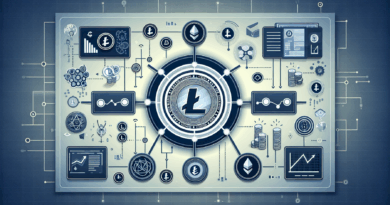Exploring Litecoin’s Scalability Solutions: A Path to Faster Transactions
Introduction
Did you know that the average transaction time for Litecoin is around 2.5 minutes? Yet, as the cryptocurrency space expands rapidly, scalability solutions are becoming more crucial than ever. How can Litecoin ensure its growth while maintaining efficiency? In this article, we will delve into Litecoin’s scalability solutions and their impact on the digital currency trading landscape.
Understanding Litecoin’s Scalability Challenges
Litecoin, often regarded as ‘silver to Bitcoin’s gold’, faces various scalability issues as it aims to handle a growing number of transactions. To put this into perspective, the average transaction throughput for Litecoin is only around 56 transactions per second (TPS), compared to Bitcoin’s 7 TPS. This gap highlights the need for innovative solutions to improve efficiency.
1. Layer-2 Solutions: A Quick Fix
One of Litecoin’s promising scalability solutions lies in the potential adoption of layer-2 technologies, such as the Lightning Network. What is the Lightning Network? Think of it as a payment channel that allows users to conduct multiple transactions off the main blockchain, settling only the final amount on-chain. This method greatly reduces congestion and enhances transaction speeds, especially beneficial for users in high-density transaction scenarios, like merchants.

2. Mimblewimble: Privacy and Scalability Combined
Another noteworthy scalability solution is the integration of Mimblewimble, a privacy-focused protocol that could enhance Litecoin’s functionality. By compressing transactions, Mimblewimble can reduce the amount of data stored on the blockchain, allowing more transactions to fit within a single block. For example, utilizing this technology could lead to increased TPS while maintaining user anonymity, addressing both scalability and privacy concerns simultaneously.
3. Adaptive Block Sizes: Flexibility in Action
Litecoin has also considered implementing adaptive block sizes to accommodate fluctuating network demand. Essentially, this means that during peak times, more transactions can be included in each block, significantly enhancing throughput. Picture a busy market: allowing more vendors in during peak hours can streamline sales and improve customer satisfaction.
4. Community and Developer Engagement
Lastly, engaging the community and developers is vital in exploring scalability solutions. The proactive involvement of the Litecoin community in debugging, testing, and providing feedback on new features ensures that these solutions are practical and user-friendly. Participating in forums and developer meetups can enhance the overall ecosystem and foster innovation.
Conclusion
In summary, Litecoin’s journey towards effective scalability solutions is not just about technological advancements; it is about creating a robust community that supports these innovations. With layer-2 solutions like the Lightning Network, the integration of Mimblewimble, adaptive block sizes, and active community participation, Litecoin is positioning itself well in the competitive landscape of digital currencies. If you’re interested in further enhancing your crypto experience, consider exploring more about the evolving landscape of cryptocurrencies at hibt.com.
Disclaimer: This article does not constitute investment advice. Please consult local regulatory agencies before making any investment decisions.
For more information about cryptocurrencies and their scalability solutions, check out related articles on our platform.

Written by Dr. Alex Mercer, a blockchain technology expert with over 15 published papers and the lead auditor for the renowned CryptoScape project.




